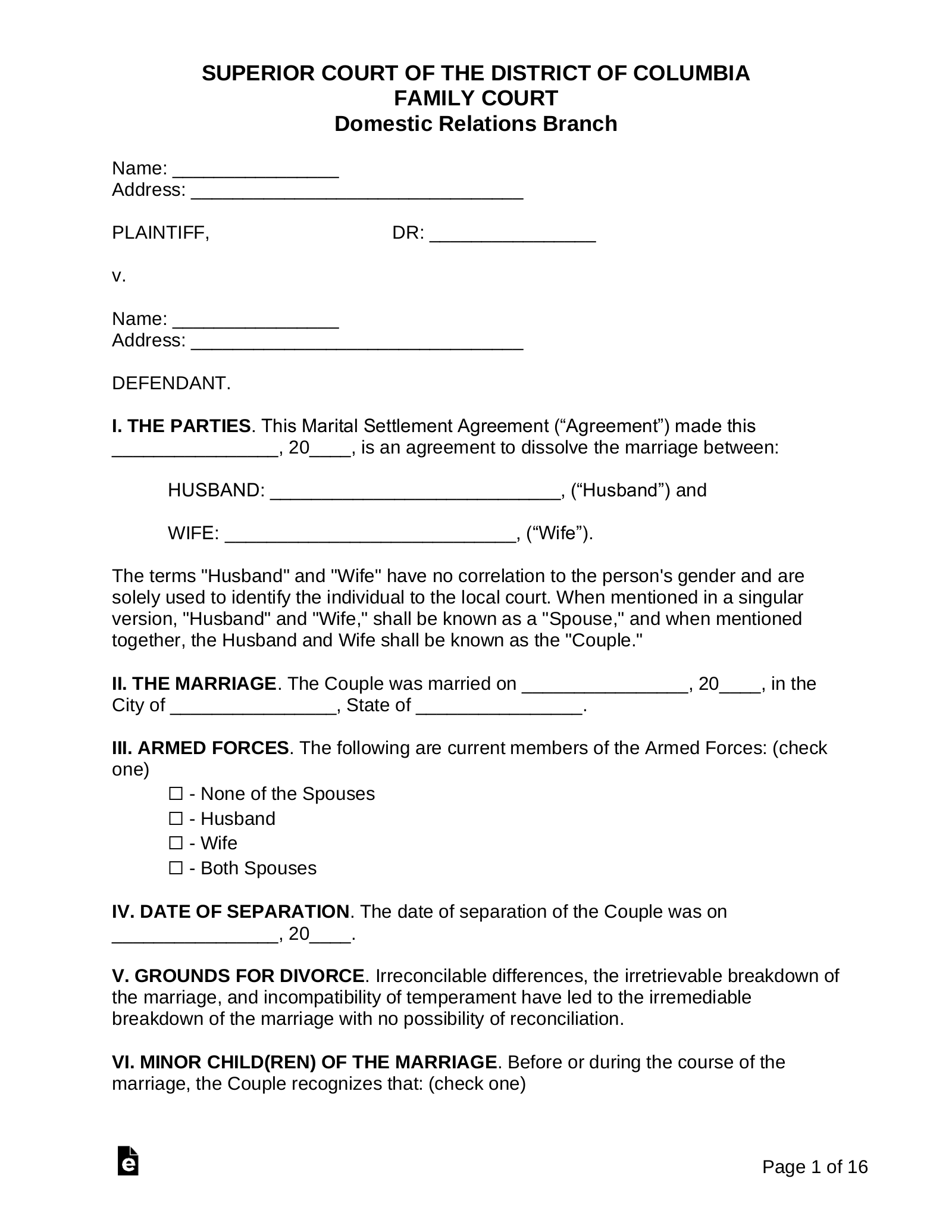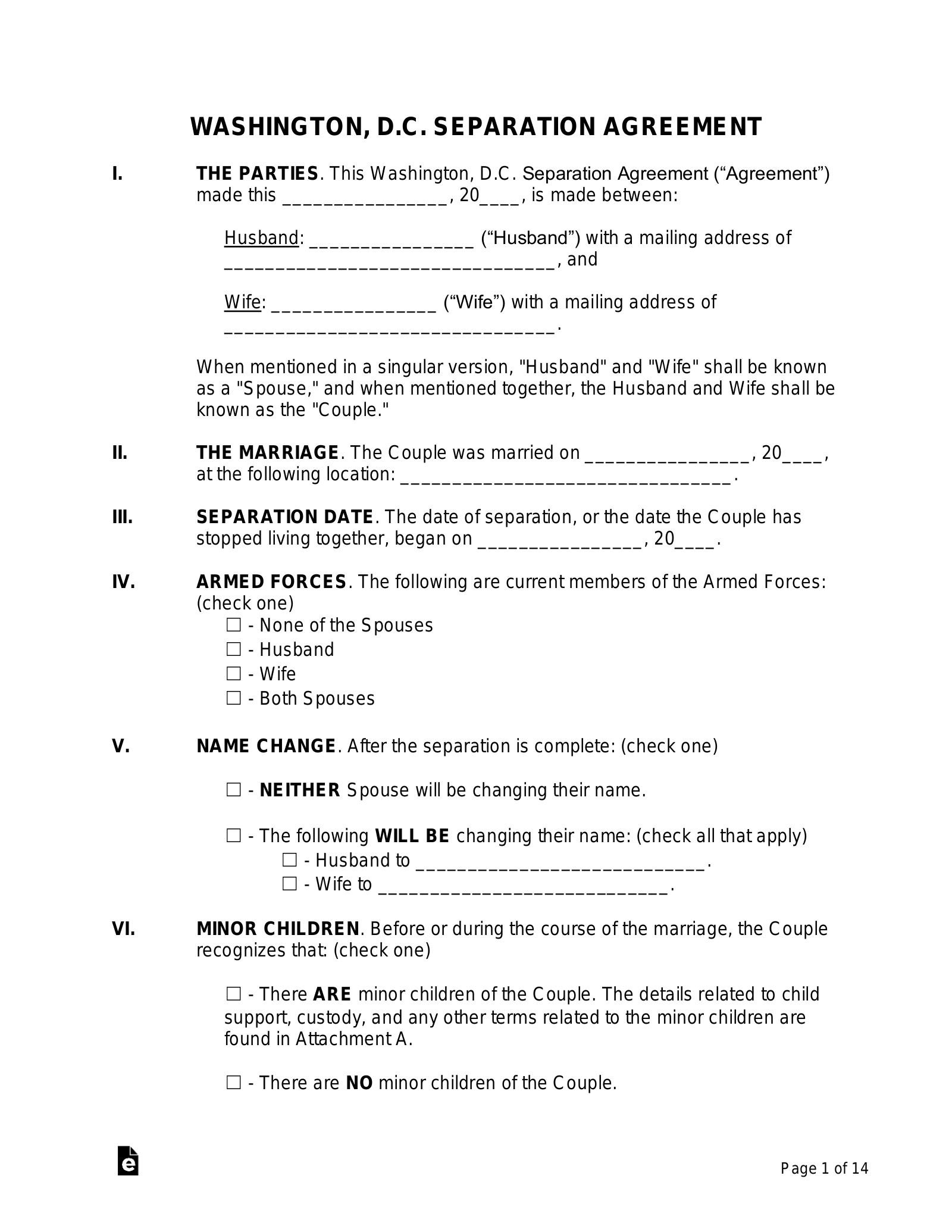Child Custody Factors
Washington D.C. courts consider the following information when making a decision about child custody:
- The child’s wishes
- The parents’ wishes
- The relationship of the child with parents, siblings, and other relevant persons
- The child’s adjustment to home, school, and community
- Each party’s mental and physical health
- Evidence of an intrafamily offense as defined in § 16-1001(8)
- The capacity of the parents to communicate and reach shared decisions affecting the child
- The willingness of the parents to share custody
- The prior involvement of each parent in the child’s life
- The potential disruption of the child’s social and school life
- The geographic proximity of the parental homes
- The demands of parental employment
- The age and number of children
- The sincerity of each parent’s request
- The parent’s ability to financially support a joint custody arrangement
- The impact on Temporary Assistance for Needy Families, or Program on Work, Employment, and Responsibilities, and medical assistance
- The benefit to the parents
How to File for Custody in Washington D.C.
1. Agree on a Parenting Plan
Parents must submit to the court a detailed parenting plan that outlines the child’s living arrangements, visitation afforded each parent, holiday arrangements, transportation between residences, education and religious training, and medical care. The parenting plan also indicates how the parents will communicate and resolve conflict. If approved by the court, the plan will become a final order.
For parents who can’t agree on the terms of their plan, the Family Court offers free mediation through the Multi-Door Dispute Resolution Division.
2. Calculate Child Support
Use Washington D.C.’s Child Support Guideline Calculator to estimate how much child support the court may order. Under Washington D.C.’s Child Support Guidelines, the combined adjusted gross income of both parents and the number of eligible children will be used to determine basic child support obligations.[1]
3. File Forms
The first step is to initiate a custody proceeding in the Domestic Relations Branch of the Family Court. This can be done by filing custody-related forms. While there are specific forms for specific situations, such as the child needing a standby guardian, the required form for all situations is the Complaint for Custody and or Visitation.
To request physical copies of forms, email FamilyCourtCertifiedCopies(at)dcsc.gov or visit the Moultrie Courthouse at 500 Indiana Avenue NW, Washington, D.C., 20001.
Check the wait times at Family Court branches.[2] Be sure to review the filing instructions prior to visiting the court. The filing party will receive a summons to court from the clerk, which contains instructions about the next steps.
4. Serve Forms
The filing party must then serve copies of both the complaint and the summons on the non-filing party. This cannot be done by the filer but can be done by an adult who is not connected to the custody case, or via certified mail with a return receipt requested. The filer has 60 days to serve a summons and complaint after filing.
The court requires proof of service, which can be provided by filing an Affidavit of Service at the Family Court Central Intake Center.
The respondent has 21 days to respond, which can be done by filing a form called Contested Answer to Complaint for Custody and or Visitation.
5. Attend Hearing
If parents cannot agree even after going through mediation, there will be a trial. Each party will have an opportunity at trial to make their case, and ultimately the judge will determine the terms of a parenting plan. A judge also has the authority to order one or both parents to attend parenting classes.
Custody Laws
- Child’s Preference: Yes, the child’s preference is considered.[3]
- Domestic Violence: § 16–914(2)
- Uniform Child Custody Jurisdiction and Enforcement Act: Chapter 46
- Visitation: § 16–914
Related Forms


